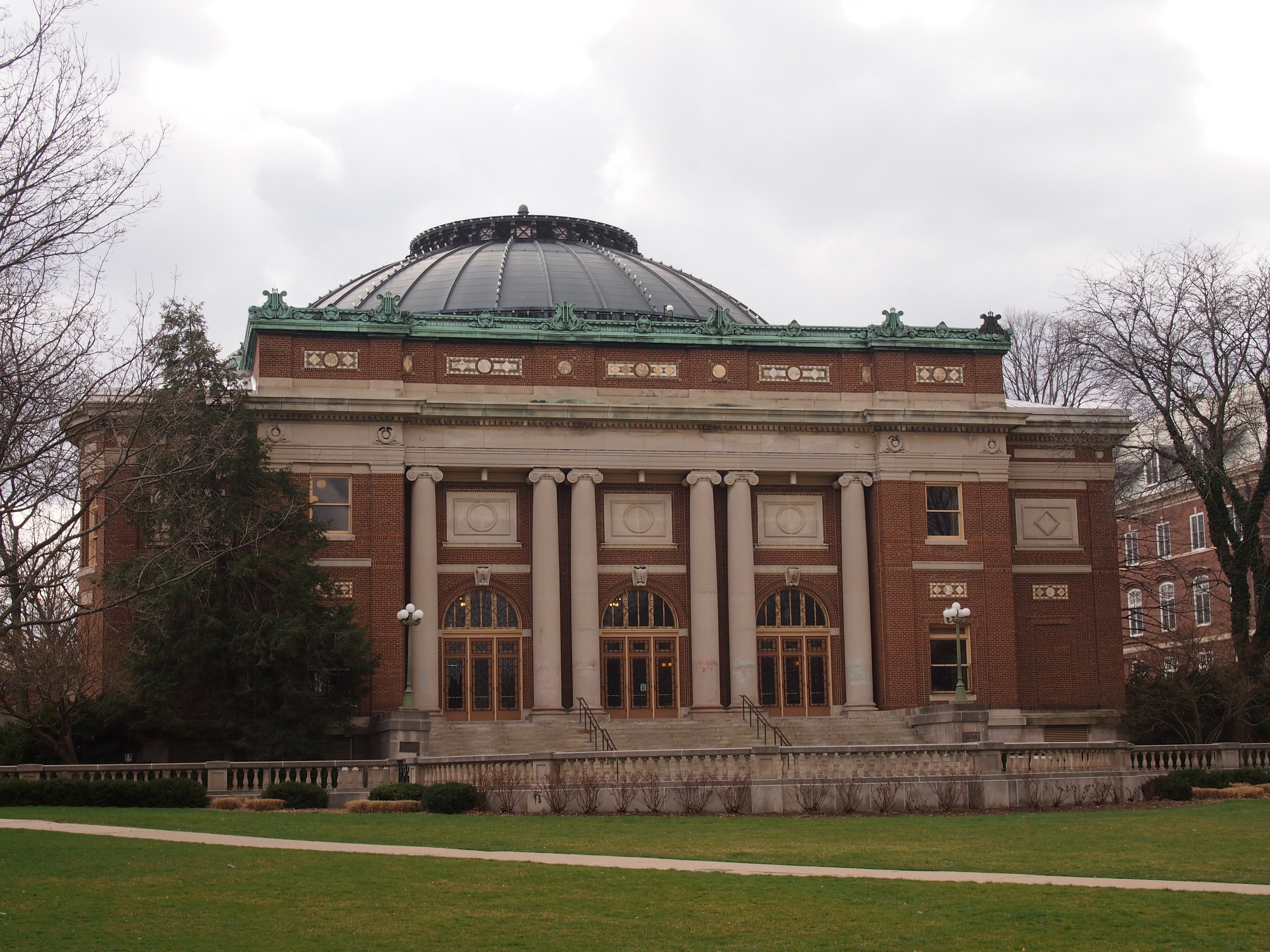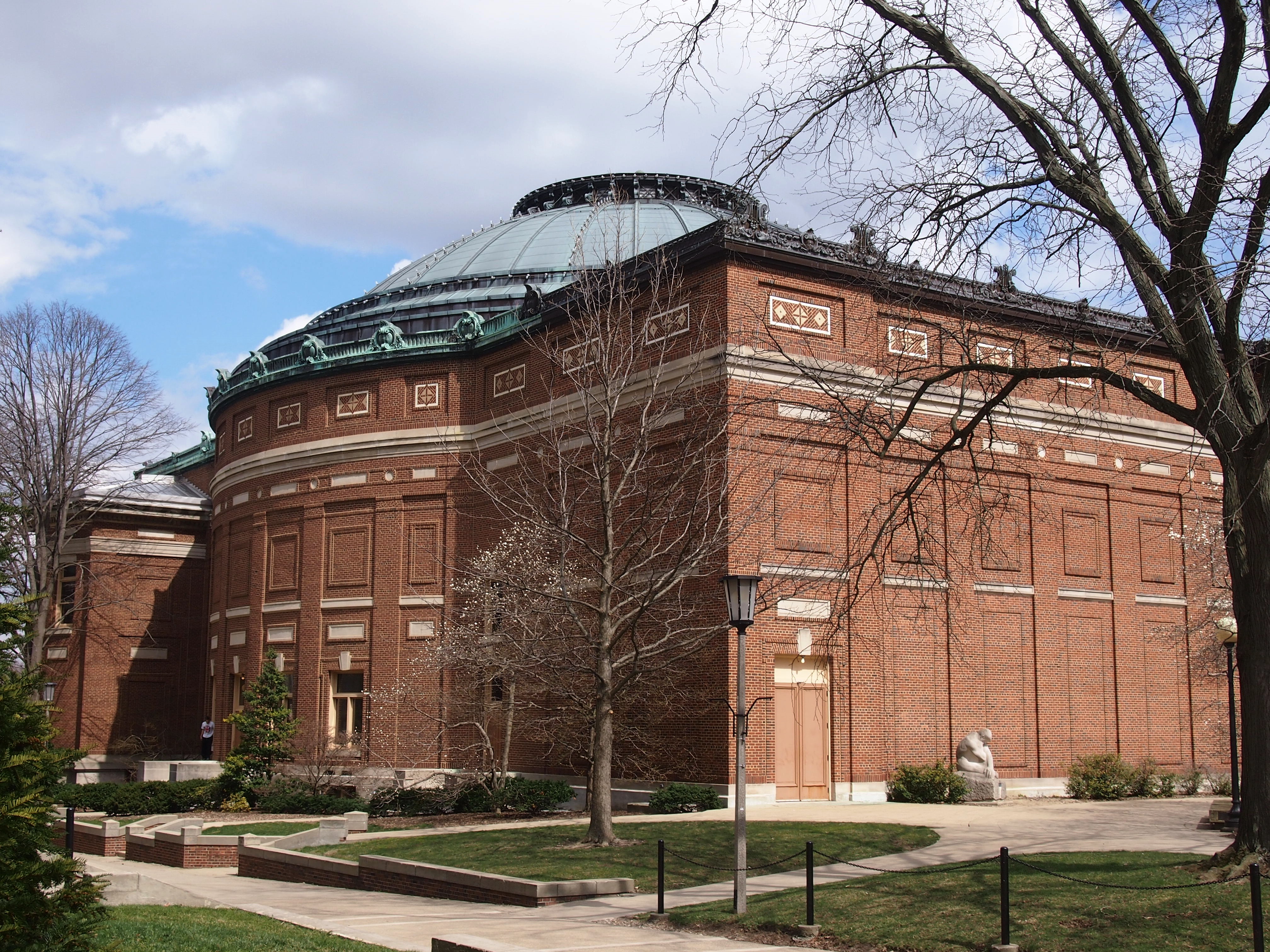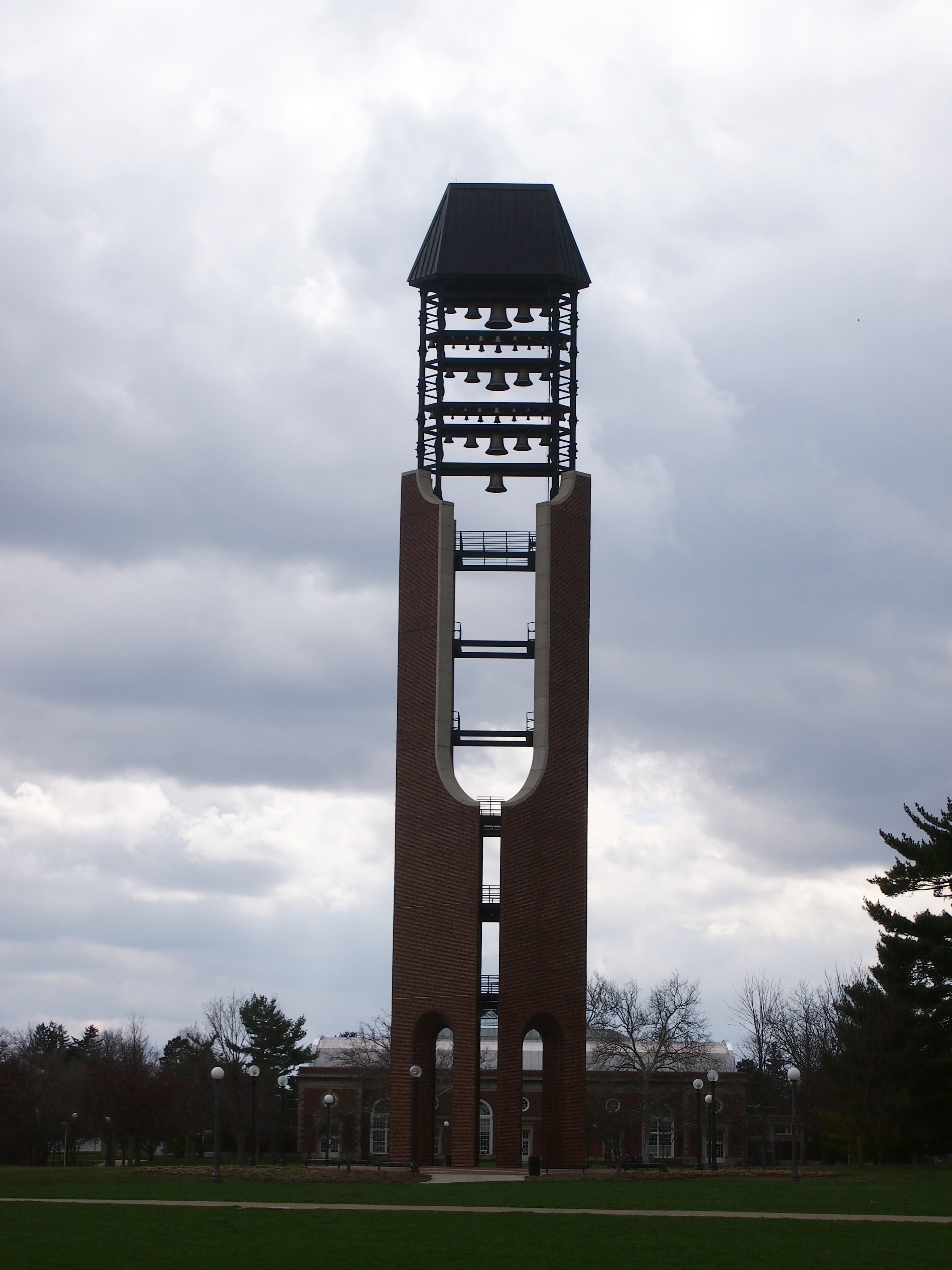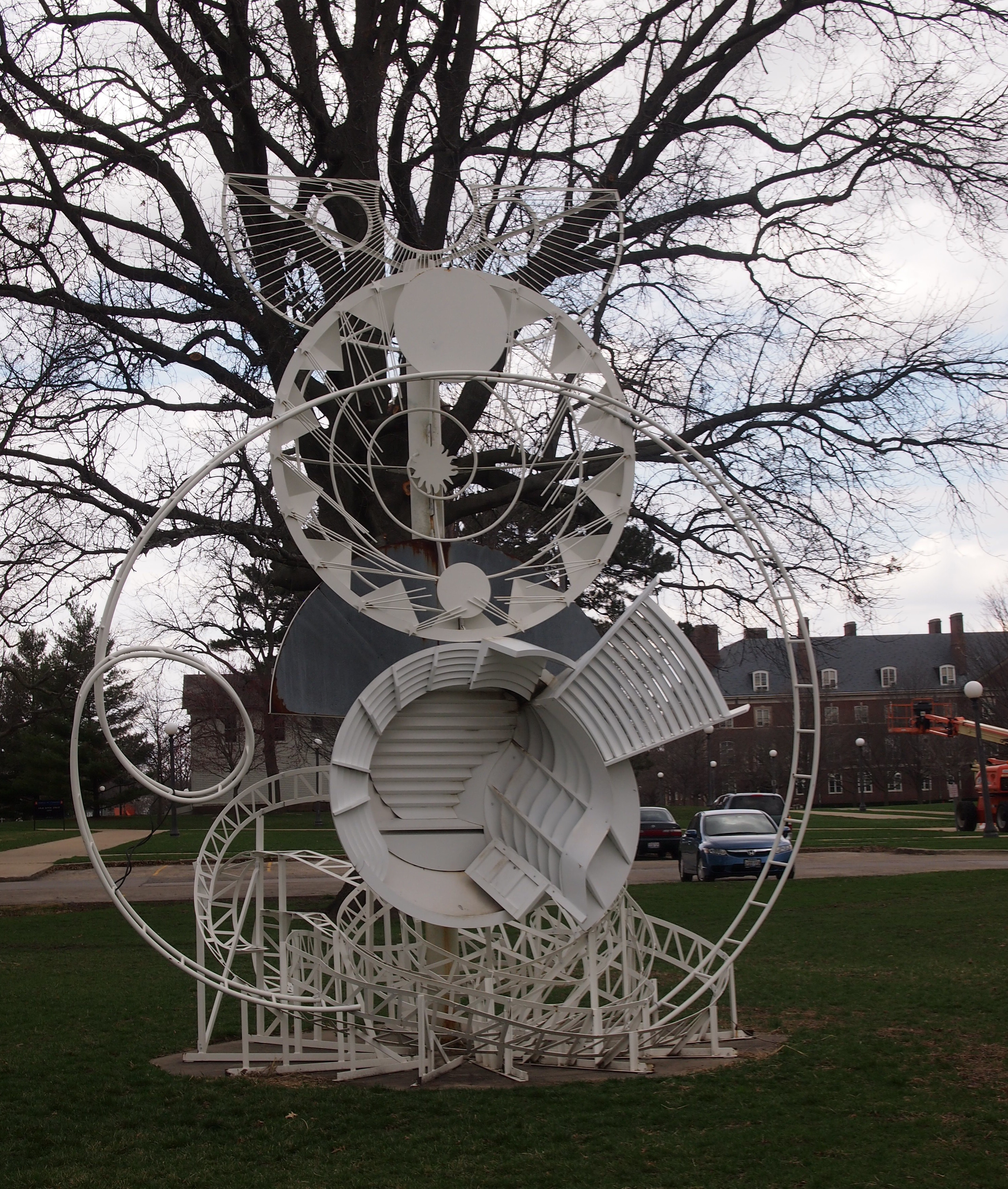On the afternoon of March 18, Lilly and I drove down to Champaign-Urbana, and on the next day, we took a look at the University of Illinois flagship campus, which happens to sprawl across both of those small towns. Since our visit, Lilly has decided to attend there in the fall. She’d been leaning toward it anyway. We’d only been there once before, briefly, during our return from the Downstate towns of Arthur and Arcola in the spring of 2007. So it was as if we’d never been there before, especially for her.
Spring break had just started at the university. That meant only a handful of students were around, including some who were clearly leaving. On one street on campus, buses were lined up and ready to take students to specifically marked destinations, mostly in the Chicago area. Spring break also meant, happily, that parking was free and easy.
Even so, we spent a lot of time on foot. Without much of a plan: sometimes new places call for the old random walkabout. Lilly will certainly learn all she needs to know about the place and more in the fullness of time. The campus has a lot of fine buildings, especially fronting the Main Quad, and I was especially taken with Foellinger Auditorium and its green dome at one end of that quad, though I didn’t quite get an image of its full domed glory.

 The building dates from 1907 and was designed by Clarence H. Blackall, a Boston architect who did a lot of theaters, and if you read a list of them, very many didn’t survive the great age (that is, regrettable age) of knocking down old stuff, whose apogee came in the 1960s. The Foellinger has clearly endured, though I’ve read that it wasn’t up to stuff acoustically at first, and needed a lot more work. We didn’t pop inside for a look. Next time, maybe.
The building dates from 1907 and was designed by Clarence H. Blackall, a Boston architect who did a lot of theaters, and if you read a list of them, very many didn’t survive the great age (that is, regrettable age) of knocking down old stuff, whose apogee came in the 1960s. The Foellinger has clearly endured, though I’ve read that it wasn’t up to stuff acoustically at first, and needed a lot more work. We didn’t pop inside for a look. Next time, maybe.
Not far away was the 185-foot McFarland Carillon, which dates only from 2009.
 A Missouri firm called Peckham, Guyton, Albers & Viets, which seems to do a lot of higher ed work, designed the tower, which has 49 bells. We noticed bells ringing at half hours and quarter hours, sometimes, but I’m not sure it was the carillon.
A Missouri firm called Peckham, Guyton, Albers & Viets, which seems to do a lot of higher ed work, designed the tower, which has 49 bells. We noticed bells ringing at half hours and quarter hours, sometimes, but I’m not sure it was the carillon.
Elsewhere we peeked inside the chapel at St. John’s Catholic Newman Center, which is part of a complex that includes Newman Hall and the Institute of Catholic Thought, and is the largest Newman Center in the country, according to Wiki. Dating from 1926, the chapel has a splendid interior. I explained to Lilly that it was named after Cardinal Newman, not Alfred E., but she didn’t know either of them.
Nearby is the Episcopal Chapel of Saint John the Devine, also a part of a campus ministry. I wanted to take a look in there too, but it was closed for the day.
Heading back to our parking space, we encountered one of the many pieces of public art on campus. There was no plaque nearby that I saw, but information is online. It’s full title is “Tree of Life Fantasy: Synopsis of the Book of Questions Concerning the World Order and/or the Order of Worlds,” by Alice Aycock. As we approached it, I figured it might be a massive sundial, as I’ve seen recently, but no.
There was no plaque nearby that I saw, but information is online. It’s full title is “Tree of Life Fantasy: Synopsis of the Book of Questions Concerning the World Order and/or the Order of Worlds,” by Alice Aycock. As we approached it, I figured it might be a massive sundial, as I’ve seen recently, but no.
This description lacquers on the art-ese pretty well, but it does rhetorically ask, “can we not comprehend the sculpture solely as an interesting, if baffling, assemblage of disparate elements?” Yes, we can. Interesting, but in my amateur opinion not baffling, because it’s mainly an interesting assemblage of disparate elements, though I’d say an interesting “combination of shapes,” since disparate is a ten-dollar word best saved for special occasions.